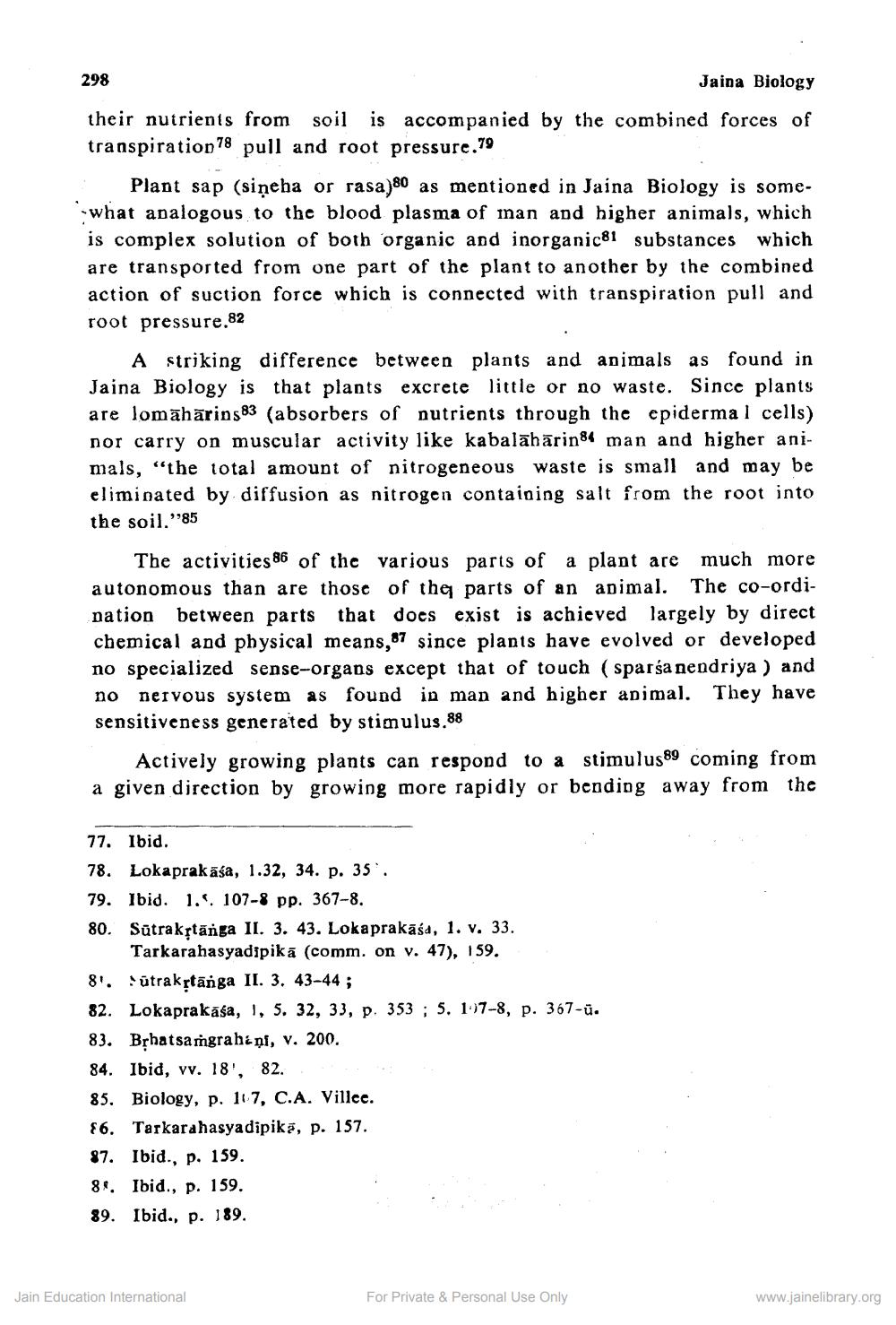________________
298
Jaina Biology their nutrients from soil is accompanied by the combined forces of transpiration 78 pull and root pressure.79
Plant sap (sineha or rasa)80 as mentioned in Jaina Biology is somewhat analogous to the blood plasma of man and higher animals, which is complex solution of both organic and inorganic81 substances which are transported from one part of the plant to another by the combined action of suction force which is connected with transpiration pull and root pressure.82
A striking difference between plants and animals as found in Jaina Biology is that plants excrete little or no waste. Since plants are lomāhārins83 (absorbers of nutrients through the epidermal cells) nor carry on muscular activity like kabalāhārin 84 man and higher animals, "the total amount of nitrogeneous waste is small and may be eliminated by diffusion as nitrogen containing salt from the root into the soil."85
The activities 86 of the various parts of a plant are much more autonomous than are those of the parts of an animal. The co-ordination between parts that does exist is achieved largely by direct chemical and physical means,87 since plants have evolved or developed no specialized sense-organs except that of touch (sparsa nendriya ) and no nervous system as found in man and higher animal. They have sensitiveness generated by stimulus.88
Actively growing plants can respond to a stimulus 89 coming from a given direction by growing more rapidly or bending away from the
77. Ibid. 78. Lokaprakāśa, 1.32, 34. p. 35. 79. Ibid. 1.5. 107-8 pp. 367-8. 80. Sūtrakrtānga II. 3. 43. Lokaprakāśa, 1. v. 33.
Tarkarahasyadipikā (comm. on v. 47), 159. 8. útrakṣtānga II. 3. 43-44 ; 82. Lokaprakása, 1, 5. 32, 33, p. 353 ; 5. 107-8, p. 367-ü. 83. Brhatsamgrahini, v. 200. 84. Ibid, v. 18', 82.. 85. Biology, p. 117, C.A. Villce. 86. Tarkarahasyadipikā, p. 157. 87. Ibid., p. 159. 8f. Ibid., p. 159. 89. Ibid., p. 189.
Jain Education International
For Private & Personal Use Only
www.jainelibrary.org




